#Angiosperms
Photo
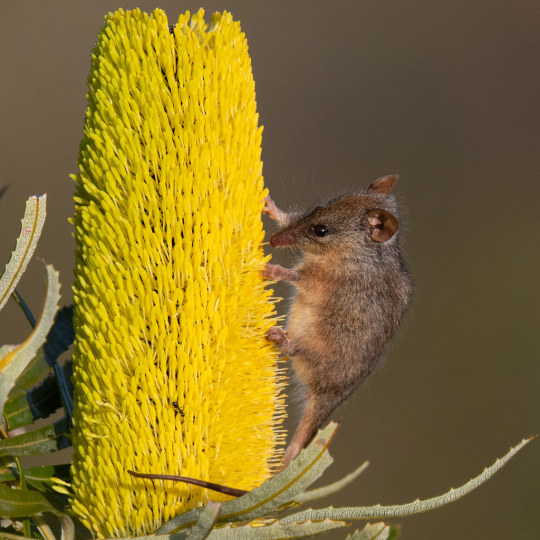
Honey possum (Tarsipes rostratus) drinking nectar from candlestick banksia (Banksia attenuata) flowers in Western Australia
John Anderson
3K notes
·
View notes
Text
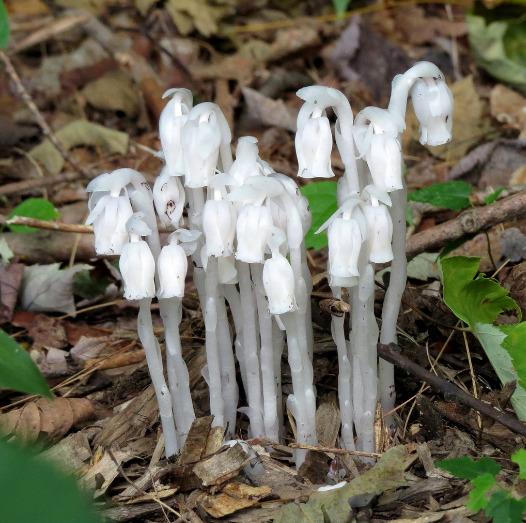
Ghost Plant (Monotropa uniflora)
Family: Heath Family (Ericaceae)
IUCN Conservation Status: Unassessed
Over 80% of plants form mutualistic relationships with soil-dwelling fungi, linking their roots to the fungus' hyphae and providing photosynthetically produced sugars in exchange for hard-to-access nutrients that the fungus takes in from the soil. The Ghost Plant, which is found mainly in temperate shady forests across much of Asia and the Americas, also connects its roots with the hyphae of fungi (specifically members of the family Russulaceae,) but contributes nothing; it is a parasite, stealing nutrients not only from its host fungus but also from other plants (particularly birches) that its host is also connected to. Living entirely on stolen nutrients means that Ghost Plants have no need to carry out photosynthesis, and as such they lack the green pigment chlorophyll that almost all plants use to absorb sunlight, giving them their namesake eerie white appearance (although on occasion pale pink individuals are recorded) and allowing them to survive in dark, shady conditions that other plants are unable to colonise. Ghost Plants bloom rarely and unpredictably (as they do not photosynthesise they have no need for aboveground leaves or stems when not reproducing, but apparently develop stems and flowers rapidly during periods of wet weather following prolonged dry conditions,) baring a single bell-shaped white flower with a black-and-yellow interior that attracts various species of bees and flies. Following pollination the plant's tiny seeds are forced through gaps in its petals and carried away on the wind, remaining dormant in the soil they settle on until they detect a suitable host fungus growing nearby.
——————————————————————————
Image Source: https://www.inaturalist.org/taxa/49477-Monotropa-uniflora
#Happy Halloween!#Ghost Plant#ghost plant#botany#biology#plant#plants#wildlife#Asian Wildlife#North American Wildlife#parasitic plants#parasitic plant#angiosperms#flowering plants
266 notes
·
View notes
Text

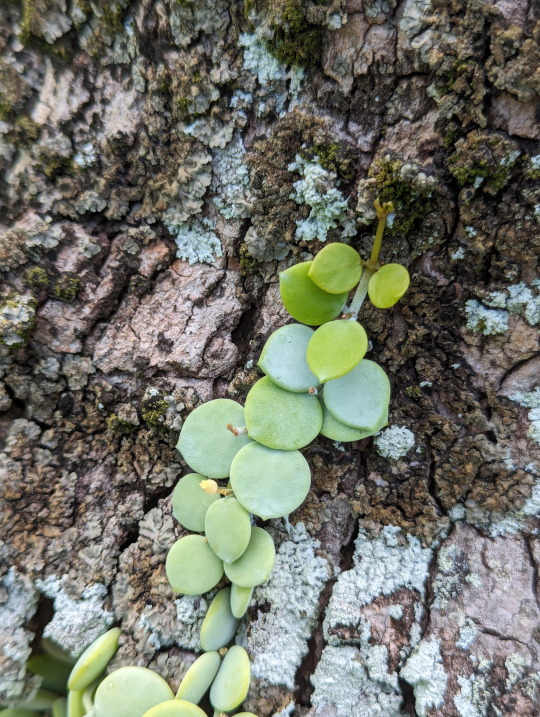
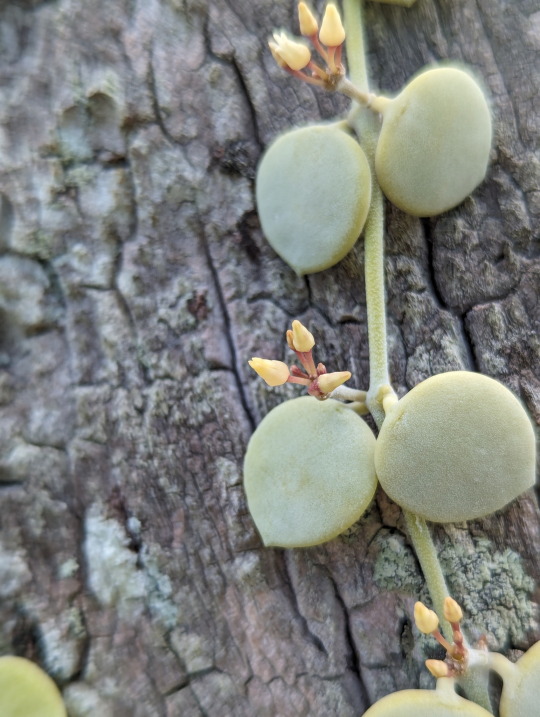
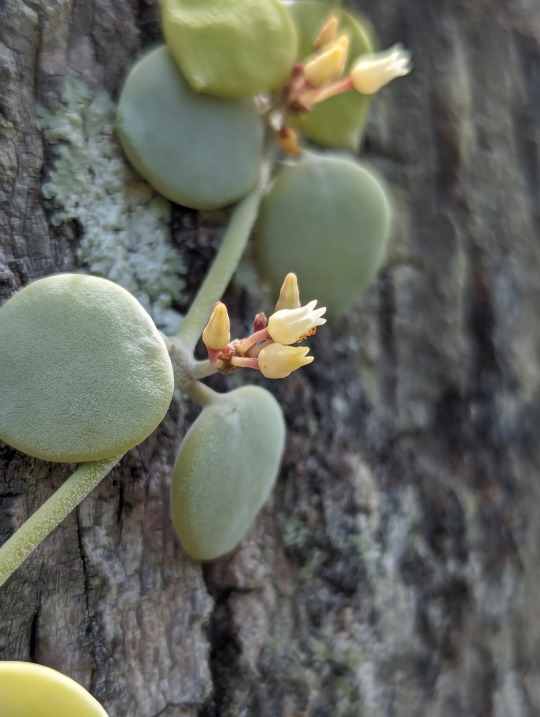

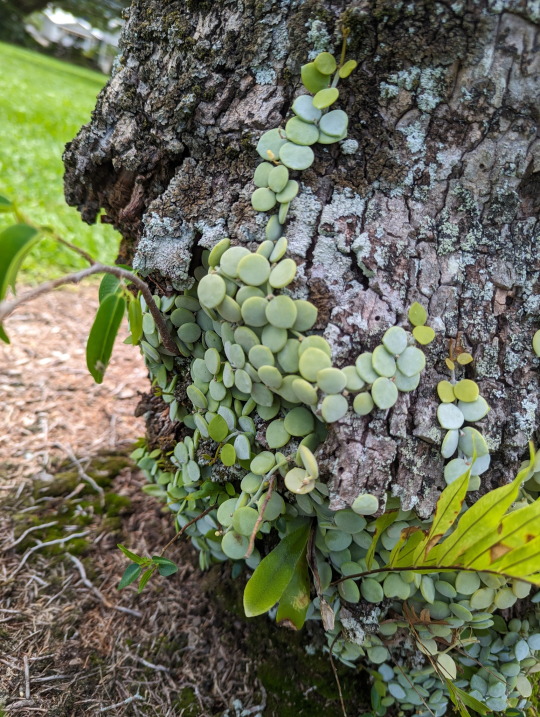
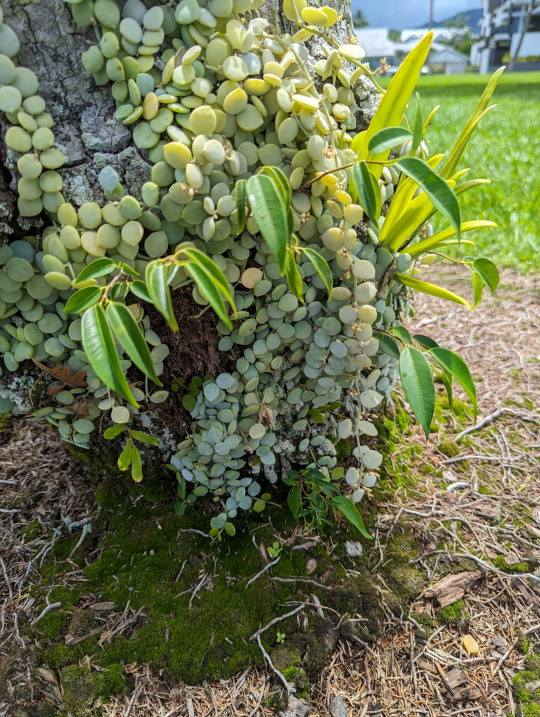
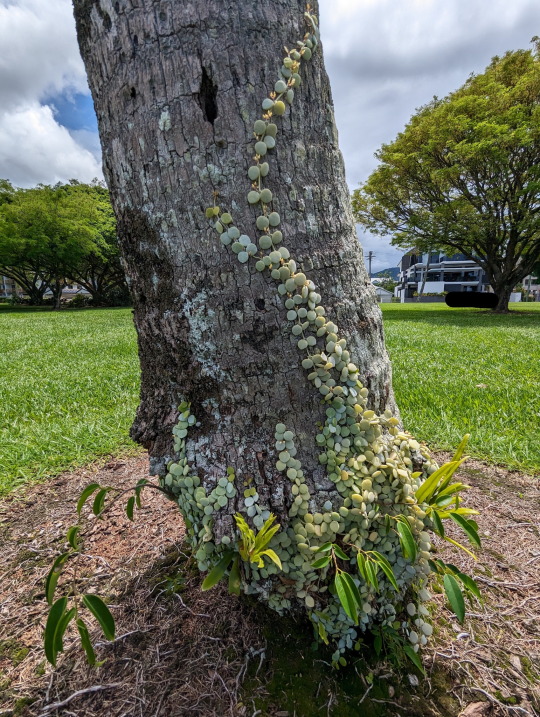
Beautiful button orchid growing on a palm tree.
17/01/24 - Dischidia nummularia
QLD:WET - Cairns
#nature#Dischidia nummularia#Button Orchid#Plantae#plants#botany#Milkweeds#Gentianales#Magnoliopsida#Dicots#Angiospermae#Flowering Plants#angiosperms#Tracheophyta#Vascular Plants
134 notes
·
View notes
Text
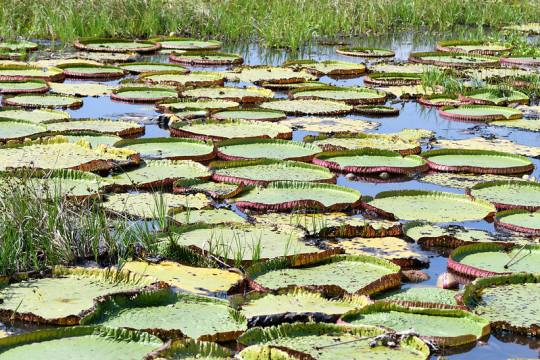
Uape Jacana giant water lilies (Victoria amazonica) in Mato Grosso, Brazil.
by Brian Henderson
#uape jacana#giant water lilies#water lilies#plants#victoria amazonica#victoria#Nymphaeaceae#Nymphaeales#angiosperms#Tracheophytes#plantae
81 notes
·
View notes
Text
Before Monocots and Eudicots: The Basal Angiosperms
Originally posted at my blog at https://rebeccalexa.com/basal-angiosperms/
One of the nice things about living on a lake is that I can go kayaking whenever I feel like it–or, more realistically, when I have the time to do so. I hope someday to be the kind of person who can start every day with a serene glide across the water, but for now I take my opportunities as I’m able to. One of my favorite things about the experience is getting to start and end my journey by paddling through a huge patch of western yellow pond lily (Nuphar polysepala, previously categorized as a subspecies of Nuphar lutea). And it was this plant that was my introduction to the concept of basal angiosperms.
See, when I have a species I really like, I spend time researching it. So I decided to dig into the natural history of this plant, one of eight extant species in the genus. In addition to finding out that the seeds are edible, and the roots are a traditional medicine, I also learned that they are an example of basal angiosperms–something that piqued my interest in tracing the evolution of various beings.

Nuphar polysepala
Basal angiosperms are essentially the oldest orders of flowering plants. Prior to the first angiosperms, plants either reproduced with cones like today’s conifers and other gymnosperms, or through spores and gemmae as with bryophytes (which may also reproduce through fragmentation.) Flowers were a new mutation that used visually appealing structures and scents to attract animals as vehicles for spreading pollen to other members of the same plant species. Flower-producing plants–the angiosperms–have since exploded into countless species, with about 300,000 known species in existence today. The most ancient lineages are known as ANITA grade.
ANITA is short for a group of five orders: Amborellales, Nymphaeales, Illiciales, Trimeniaceae, and Austrobaileya. More recently Illiciales and Trimeniaceae have been folded into Austrobaileya, leaving the acronym shorter at ANA, though some recent papers persist in using ANITA.
Angiosperms are commonly thought to have evolved during the early Cretaceous Epoch, around 135 million years ago, though pollen that may be angiosperm in origin was found dating back to about 250 million years ago. Soon after angiosperms appeared, their lineage began to branch out. The earliest branches to diverge were the basal angiosperms. Amborella trichopoda is the sole representative of the oldest branch; all other flowering plants share the same common ancestor from which Amborella‘s ancestors diverged.

Amborella trichopoda. By Scott Zona, CCA-2.0
Amborella lives all the way on the other side of the planet from me, on the island of Grand Terre in New Caledonia, which means my chances of getting to see it in person are pretty slim. However, there are lots of basal angiosperms out there, and they have some pretty interesting qualities.
If you learned about plants in middle school or junior high, you very likely learned about “monocots and dicots” as being the two main divisions of flowering plants. In truth, these two are joined by the basal angiosperms, and a fourth group, the Magnoliids. These latter Magnoliidae are the next-oldest group of angiosperms, and they and the basal angiosperms both pre-date the emergence of the monocots and dicots (now known as eudicots). Species in these older lineages have physical traits of both the monocots and eudicots, giving a glimpse of what flowers were like before these more numerous groups appeared. This also shows that monocots and eudicots have a common ancestry, rather than one evolving from the other.
The Nymphaeales, of which my beloved western pond lilies is a part, are a good example. If you examine the structure of a stem of a pond lily, it looks very much like that of a eudicot. Rather than having vascular tissue distributed throughout the the stem’s tissue as with a monocot, the vascular bundles are arranged in a circle like in a eudicot. But the stem lacks the eudicots’ cambium, which creates xylem and phloem.
Like the monocots, Nymphaeales flower parts are arranged in multiples of three, whether petals, stamens, etc. However, this does not mean the basal angiosperms are the direct ancestors of monocots. Compare Amborella which has varying numbers of tepals (the forerunner of sepals and petals), stamens, carpals and other parts depending on whether the flower is male or female. Neither sex of Amborella displays a trimerous (parts in multiples of three) flower. And, just for the record, eudicot flower parts generally show up in multiples of four or five.
The relationships among these various groups of flowering plants aren’t just dependent on the physical characteristics, though. A lot of what we’ve been learning lately about basal angiosperms comes through genetic research. For example, a recent debate concerns whether Amborella is the oldest basal angiosperm, or whether Amborella and the Nymphaeales together are the very oldest lineages, closer related to each other than the rest of the angiosperms.

Kadsura japonica
If you live in Australia, east Asia, or the Caribbean, you have species from the Austrobaileya in your region. Austrobaileya scandens is the only member of its genus and family, and is located in northeast Queensland. The Schisandraceae and Illiceaceae are woody plants found in tropical areas in east Asia and the Caribbean. While in tropical Southeast Asia, you might look for the Trimeniaceae, various species which may also be found in eastern Australia and the Pacific Islands. Amborella, of course, is limited to New Caledonia.
The Nymphaeales includes the better part of a hundred species, including the various water lilies, fanworts, and similar plants. They are quite widespread, found commonly (to include as invasive species in some cases) on all continents except for Antarctica.
As for me, I will continue to enjoy the presence of my local western yellow pond lilies. Now that I have a deeper understanding of their evolutionary history, I can better appreciate what unique neighbors they are!
Did you enjoy this post? Consider taking one of my online foraging and natural history classes, checking out my other articles, or picking up a paperback or ebook I’ve written! You can even buy me a coffee here!
#long post#botany#plants#evolution#prehistory#flowers#angiosperms#nature#ecology#science#scicomm#science communication
225 notes
·
View notes
Text
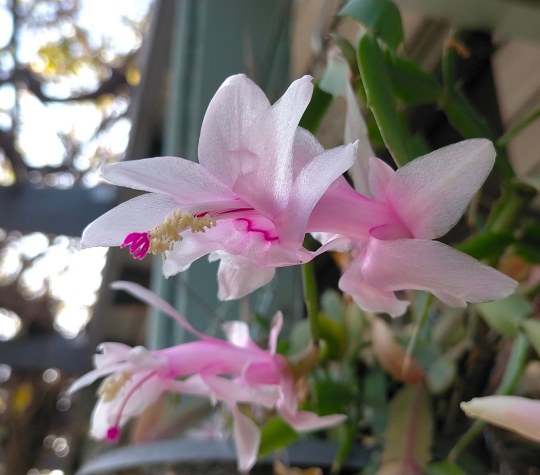
Schlumbergera sp.
14-JUN-2023
Melbourne, Vic
#australia#victoria#melbourne#zygocactus#flowers#pink flowers#angiosperms#caryophyllales#cactaceae#cactoideae#rhipsalideae#schlumbergera
16 notes
·
View notes
Text
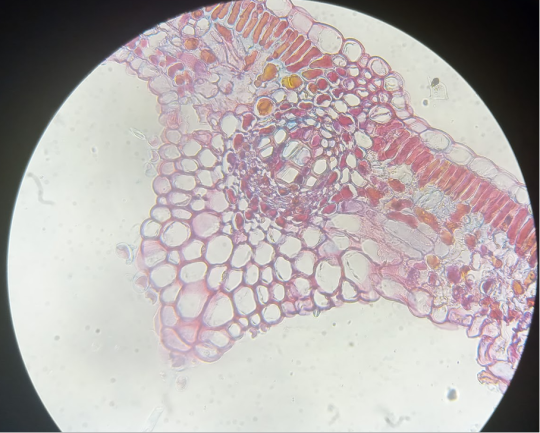
Some coloured plant cell tissue
49 notes
·
View notes
Text
traditional living

is a union of divinity and matter
with mind and spirit being weathered upon
day or night, in between
and none of this is self; true self
is merely a visitor in vehicles,
business or tourists on paths
or a trail of lovers
where merits accumulate
and do they ever
and waiting is action
and often it's precisely what is needed
and there you are
but so are we
in ever present light
as nobody travels alone
without discriminations
morning painting using corel painter, blue marble for clouds and a fire escape along the tree with additional photographs layered in. agave americana is a tad fascinating, and I gotta say it's actually a plant
graphic and words ©spacetree 2024
#spilled thoughts#spilled ink#artists on tumblr#my writing#poetry#spilled poetry#poem#poems on tumblr#spilled words#spilled writing#digital painting#digital art#original writing#original poem#original post#original painting#angiosperms
2 notes
·
View notes
Photo
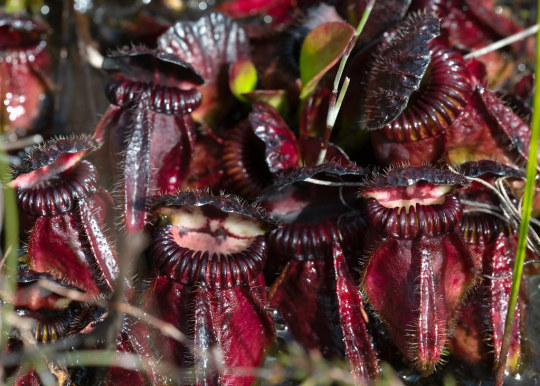
Albany pitcher plant (Cephalotus follicularis) in Western Australia
John Anderson
524 notes
·
View notes
Text

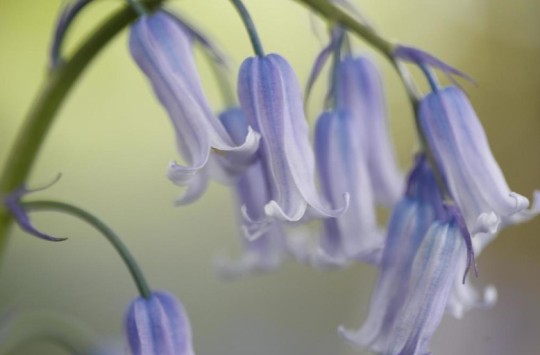
Common Bluebell (Hyacinthoides non-scripta)
Family: Asparagus Family (Asparagaceae)
IUCN Conservation Status: Unassessed
Adapted to life in deciduous forests with dense canopies that limit the degree to which low-growing plants can access sunlight, Common Blubells survive by rapidly developing and reproducing during the early spring before the trees around them develop their leaves. In the later spring and early summer, as taller competing plants develop leaves, the flowers, stems, leaves and even roots of members of this species wither as they enter a dormant state until the following spring, with only an onion-like subterranean bulb, packed with sugars produced through photosynthesis during the non-dormant period, remaining; come next year's spring, the sugars in the bulb are used to facilitate the rapid development of new roots and leaves, allowing the bluebell to repeat the process year after year. Common Bluebells can reproduce both sexually (producing 5-12 small, pale-purple bell-shaped flowers that droop notably to one side when in bloom, with each flower possessing pollen-producing "male" organs and pollen-receiving "female" organs, with any flower that is pollinated developing into a small seed-filled pod that drops its seeds as the plant goes dormant) and asexually (with new but genetically identical bulbs, known as "daughter bulbs" developing as offshoots from the sides of an existing mature bulb, known as a "mother bulb",) and as they thrive in shady deciduous forests and are unable to easily disperse their seeds or bulbs over any great distance, it is not unusual for the understory of a forest that supports members of this species to be completely dominated by them during the spring - such forests are referred to in some regions as "bluebell woods'."
--------------------------------------------------------------------------
Image Source: https://www.inaturalist.org/taxa/56132-Hyacinthoides-non-scripta
#common bluebell#Common Bluebell#bluebell#botany#biology#angiosperm#angiosperms#flowering plants#flowers#plant#plants#wildlife#European wildlife#flower
105 notes
·
View notes
Text

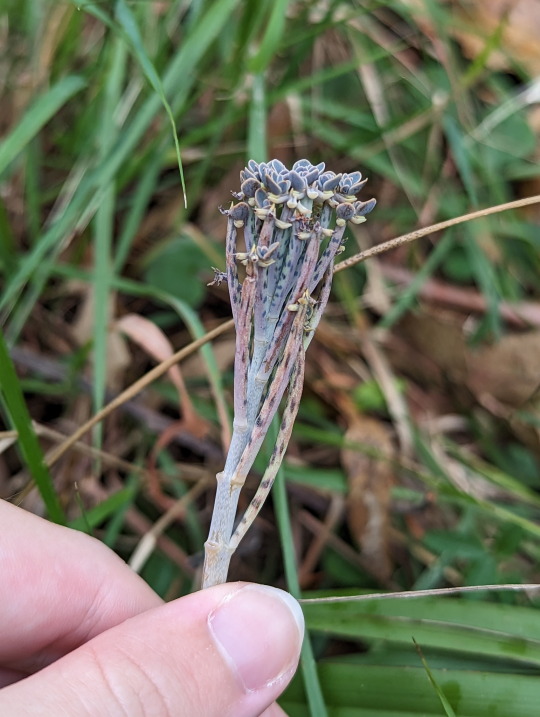
Mother-of-Millions
Kalanchoe delagoensis
20/03/23 - NSW
#Kalanchoe delagoensis#Mother-of-Millions#Kalanchoe#Kalanchoes#Crassulaceae#stonecrops#Magnoliopsida#Dicots#Angiospermae#angiosperms#Flowering Plants#flowers#Tracheophyta#Vascular Plants#Plantae#Plants#botany
349 notes
·
View notes
Link
134 notes
·
View notes
Text

The Siberian candyflower (Claytonia sibirica) is one of my favorite native wildflowers here in the PNW; no blooms on this one yet, but it has healthy-looking leaves. I always loved the purple hue to the stems, too. And it's edible! It's in the same genus as miner's lettuce (Claytonia perfoliata).
I know spring is still another month away, but we're getting the first greening up that's so common in the latter weeks of winter here. Every year it seems like I need spring's arrival a little more.
#Claytonia#plants#botany#native plants#native species#PNW#Pacific Northwest#flowers#angiosperms#foraging#edible plants
41 notes
·
View notes
Photo
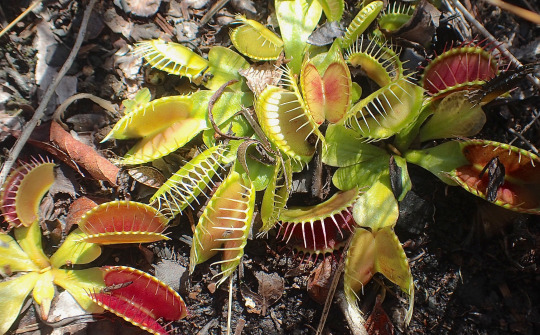
Venus flytrap (Dionaea muscipula)
photo credit: Allen Belden
#venus flytrap#Dionaea muscipula#angiosperms#angiospermae#Caryophyllales#carnivorous plants#united states#plant
25 notes
·
View notes
Video
youtube
This Is An Ant World, We're Just Living In It
2 notes
·
View notes
